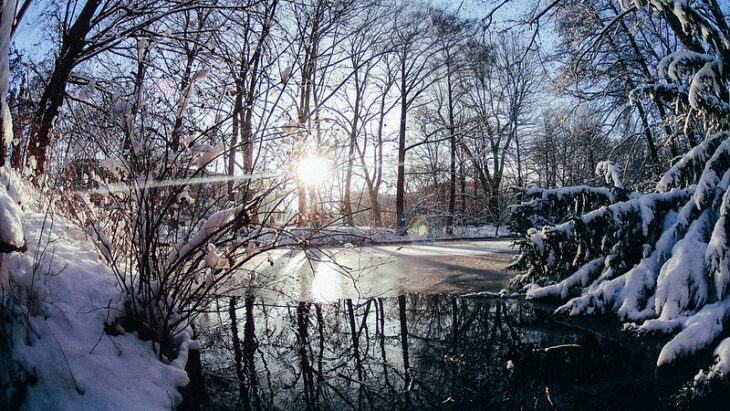As the Earth continues its journey around the Sun, the animals and plants of the northern hemisphere are preparing for the start of autumn in September and the coming winter. While humans rely on calendars to keep track of the seasons, other organisms use changes in the weather and the amount of daylight to signal when winter is approaching. For example, long-lived trees will often hold onto their leaves until the days become shorter, even if an early snow storm suggests winter has arrived.
Plants and animals have complex proteins and sophisticated memories that allow them to decide when to prepare for the colder months. Microorganisms like bacteria are also susceptible to the cold of winter and need to prepare themselves for harsher weather. But it is difficult for microorganisms to sense seasonal changes because of their simple biology and short lifespans.
Some microorganisms are able to sense the hours of daylight. A group of these microorganisms, known as cyanobacteria, can predict when days start and end. Cyanobacteria use 3 Kai proteins called KaiA, KaiB, and KaiC to keep track of time by sensing the hours of light and dark in a day, called a photoperiod. A team of researchers at Vanderbilt University wanted to test whether cyanobacteria’s ability to sense photoperiods might also allow them to sense seasonal changes.
The scientists grew cells of cyanobacteria on a dish filled with nutrients for 8 days with varying photoperiods. Some cells were grown under summer-like days with 16 hours of daylight, others under winter-like days with 8 hours of daylight, and some under intermediate days with 12 hours of daylight. The scientists took cells from each photoperiod condition and placed half into a bucket of ice at 32°F (0°C) and half in a closed chamber with controlled temperature called an incubator at 86°F (30°C) for 2 hours. The cells were then moved back onto the dish at 86°F (30°C) and left to grow for 5 days.
The scientists calculated a survival rate for each photoperiod condition by comparing the number of cells that could grow from the ice bucket and the incubator. They assumed that if the cells could recognize that shorter days meant winter was coming, they would likely have a way to become more cold resistant and fewer would die in the ice bucket. The scientists found that the cells of cyanobacteria that were grown under the shorter photoperiod were 2-3 times better at surviving freezing temperatures than cells that were grown under longer photoperiods.
The researchers also wanted to investigate if the cold resistance of the cells grown for short photoperiods was due to their sense of the day length. So, they removed the Kai proteins from the cells and repeated their experiment. These cells had the same survival rates of about 35% regardless of the length of the photoperiod they were grown under. In comparison, cells with the Kai proteins had a survival rate of 75% when they were grown under winter photoperiods and 25% when grown under summer photoperiods. The scientists concluded that these cyanobacteria are sensing when days shorten and are responding by preparing for the cold.
Next, the scientists wanted to understand how the cells were preparing for the cold. They knew that some cells can change the composition of fats in their cell walls in order to maintain their physical structure when temperatures drop. The scientists tested whether the same change in cell wall fats was occurring with cyanobacteria grown under winter photoperiods by chemically extracting the fats present in their cells using chloroform, methanol, and water. They measured the amount of different fats in the cells with an instrument that can detect different substances in a sample, called a mass spectrometer. Through this analysis, the scientists verified that cyanobacteria grown with shorter photoperiods also increased the amounts of fats that make their cell walls more cold resistant.
The researchers concluded that because cyanobacteria are able to sense changes in the seasons, this ability likely evolved long ago and may be active in other microorganisms. The team hopes that by studying cyanobacteria and their ability to sense photoperiods, scientists can learn how ancient organisms sensed the seasons. They suggested that as algae can sense photoperiods and threaten water habitats during algal blooms, researchers may be able to control algal blooms and protect water habitats by understanding connections between photoperiods and how algae adapt to the seasons.


